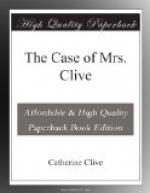Jean T. Shebanek, William Andrews Clark Memorial Library
Typography by Wm. M. Cheney
INTRODUCTION
Among other things, the licensing act of 1737 stipulated that Covent Garden and Drury Lane exclusively were the patented and licensed theaters (respectively) in London, a fact directly related to the revolt of prestigious players six years later. Although there were sporadic performances of “legitimate” drama in unlicensed playhouses between 1737 and 1743, full-time professional actors and actresses were in effect locked into the approved theaters during the regular theatrical season. Suspecting a cartel directed against them personally and professionally by the “Bashas” Rich at Covent Garden and Fleetwood at Drury Lane,[1] the players from Drury Lane in the summer of 1743 banded together and refused to perform the next season until salaries and playing conditions improved. Tardy and partial payment of salary was the surface sore point, unprincipled and unwarranted manipulation by the managers the underlying one. As the Macklin-Garrick quarrel attests,[2] the conflict was not only between labor and management; but the latter confrontation is central to the conflict in 1743 and the subject of The Case of Mrs. Clive Submitted to the Publick, published in October, 1744, by which time Catherine (Kitty) Clive had established herself as not only first lady of comedy but also as somewhat of a patriot of the acting profession and the Drury Lane company.
Coming to Drury Lane in 1728 while still in her teens, Kitty Rafter (1711-1785) quickly became a favorite of the town by virtue of her singing voice, vivacity, and gift for mimicry. Admired first as a singing actress, Miss Rafter in 1731 gave unequivocal notice of her considerable talent as a comic actress in the role of Nell in Coffey’s The Devil to Pay, one of several hundred she mastered. Her specialties: Flora in The Wonder, Lady Bab in High Life Below Stairs, Lappet in The Miser, Catherine in Catherine and Petruchio, Mrs. Heidelberg in The Clandestine Marriage, and the Fine Lady in Lethe. Mrs. Clive’s (on 4 Oct. 1733, Miss Rafter married George Clive, a barrister) popularity as comedienne and performer of prologues and epilogues is indicated by the frequency of her performances and long tenure at Drury Lane (she retired in 1769) and documented by the panegyrics of Fielding, Murphy, Churchill, Garrick, Dr. Johnson, Horace Walpole, Goldsmith, fellow players, contemporary memoir writers, and audiences who admired her.[3] Dr. Johnson, I feel, gives the most balanced, just contemporary appraisal of Mrs. Clive the actress: “What Clive did best, she did better than Garrick; but could not do half so many things well; she was a better romp than any I ever saw in nature."[4] Part of the half she could not do well were tragedy roles, attested




